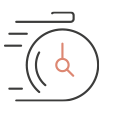Ofakim is a small city in the Southern District of Israel with a population of approximately 28,000. It was founded in 1955 as a development town, absorbing Jewish immigrants mostly from Morocco, Tunisia, Egypt, Iran, India and Romania. Residents used to work at local textile factories, until they closed and then in construction and agriculture. In the late nineties Ofakim was reported as suffering from the highest unemployment rate in Israel. A wave of immigrants from the Former Soviet Union, and government incentives, has led to slight improvement, however a growing ultraorthodox Jewish community in recent years is a substantial factor in the city.
Ofakim’s educational system is a mirror of its social structure. Only 40% of the city’s students attend a State school in the city, while the rest go to unofficial ultraorthodox yeshivas or to magnet schools outside the city. There are 8 high schools in Ofakim, however only one of them is a State secular school, and another one is a religious school, while the other six are ultraorthodox yeshivas. The matriculation rate, which is calculated only against those students who attend a school that includes matriculation tracks, was 42.7% in 2017, half of the national 68.3% average.
Five units in mathematics and physics were off the menu for Ofakim’s students until 2012, when the Virtual High School ‘opened its doors’ for a handful of excelling students. After a couple of years, in which 4 students graduated with five units, the local education leadership gained confidence and decided to leave the online program and set up regular classrooms in mathematics instead. Since then it is an uphill struggle, and the annual drop-down rate is approximately 20% for each year from 9th to 12th grade. Nevertheless, in 2017, the five-unit graduation rate was 7% (12 students).
In order to minimize the ‘leakage’ of students from the five-unit track, the municipality believes they need to strengthen their students and teachers’ mathematical foundations. They set a goal of increasing the five-unit graduation rate from 7% to 20% (35 students) by 2021 and propose a program to intensively work with their teaching cadre in middle school and high school. They approached the Davidson Institute to provide instructional coaching for the six 5-unit teachers and additional 12 teachers of the advanced track in middle school.
Davidson Institute will work with the teachers as a professional learning community once every two weeks for 3 hours over three years, on strengthening their mathematical knowledge. They will also provide individual coaching in schools once a week focusing on developing the clinical teaching techniques of the teachers, by using classroom observations and student diagnostics. The two school principals will monitor the progress, and in consultation with Davidson Institute will decide on mid-course corrections.
* The text presented above shows the grant as approved by the Foundation Board / Grant 309




